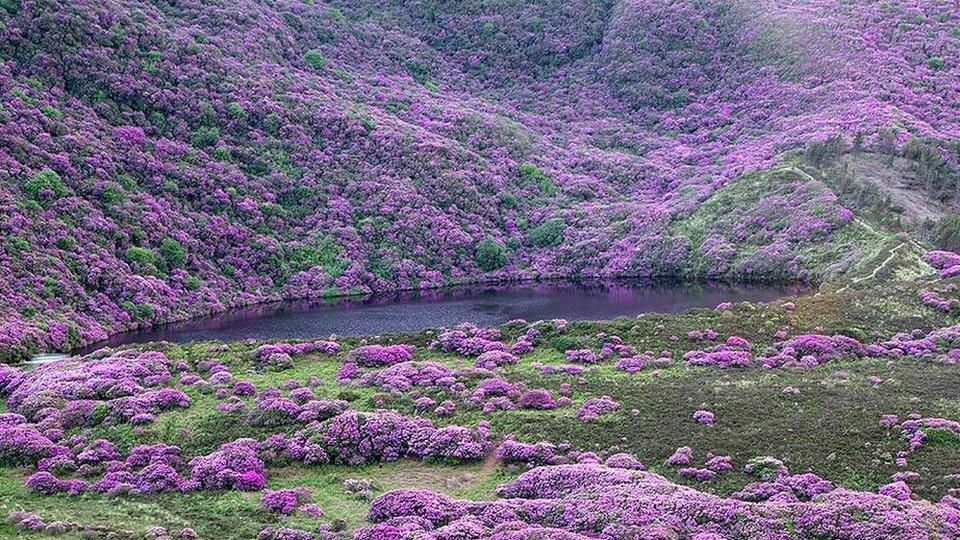Invasive species cost NI economy £46.5m each year
- Published
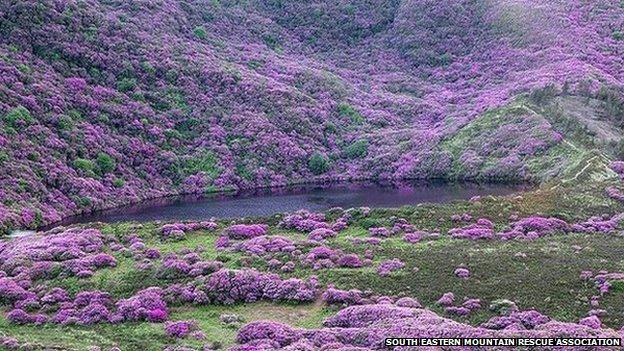
Rhododendron, an invasive species, trapped a couple in County Tipperary
Invasive species cost the Northern Ireland economy £46.5m each year, according to official figures.
A report on the economic cost of invasive and non-native species across the island of Ireland was prepared by Invasive Species Ireland, for the Northern Ireland Environment Agency (NIEA) and National Parks and Wildlife Service.
The Department of Environment defines invasive species as "harmful alien species.
It says its introduction or spread threatens the environment, the economy, or society, including human health".
The department added that they are "extremely difficult and costly to control" and their "ecological effects are often irreversible".
Invasive species are considered to provide the greatest risk to biodiversity worldwide, and can be introduced into the environment deliberately or accidentally.
They form direct competition with native wildlife and plants, alter habitats and introduce parasites and pathogens that native species are not immune too.
Stephen Foster, from the NIEA's Invasive Species Team, said that attitudes towards non-native animals and plants can change over time.
"Some species that were once regarded as invasive almost 150 years ago are now accepted as part of the landscape.
"There will be winners and losers when invasive species establish themselves. Some have a more significant impact than others."
There are 31 established invasive species in Ireland and 12 species that pose an immediate potential threat.
Here are five of the worst unwanted invasive species. If you spot any from the list, they can be reported on the Invasive Species Ireland website, external.
Rhododendron

Once rhododendron establishes itself, few native plants survive because of its dense roots
On Monday, an Irish couple were rescued from a dense rhododendron forest after becoming trapped for over five hours.
Many people have attractive rhododendron bushes in their gardens, but what they may not realise is the species is actually one of the most invasive on the island of Ireland.
Rhododendron (Rhododendron ponticum) plants are native to Europe and Asia.
The expansion of the plant was accelerated by human behaviour. It was introduced into parks and estates as an ornamental shrub in the 1700s.
Once rhododendron establishes itself in an area, few native plants survive because the roots of the plant are very dense.
The leaves of rhododendrons also contain toxins that some animals find inedible.
The plant is an aggressive species, present in almost every county throughout Ireland.
Rhododendron costs the Irish forestry service almost £1m a year. In Northern Ireland, it is estimated that the plant costs about £270,000 per year to control and remove.
Floating pennywort
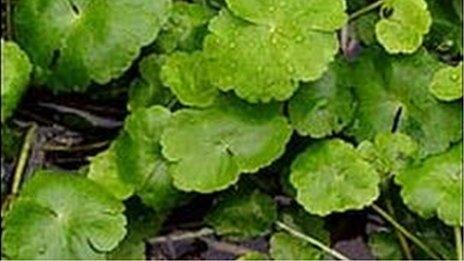
Floating pennywort was initially recorded on the Ards Peninsula in 2002
Floating pennywort is native to North America. It was first brought into Ireland as a plant for tropical aquariums and ponds, but has since dispersed into the wild.
It is a floating plant that thrives in shallow, still flowing water. It can grow up to 20cm a day.
Once established, floating pennywort increases the risk of flooding and can obstruct recreational activities such as fishing and canoeing.
The plant was initially recorded on the Ards Peninsula, County Down, in 2002.
In 2010, it was spotted in the River Lagan by the Dromore and District Angling Club.
Over two days, an estimated eight tonnes of the plant was removed.
Monitoring of the aquatic plant occurs annually at the River Lagan and is set to continue for several more years to ensure the plant cannot re-establish itself.
Grey squirrels
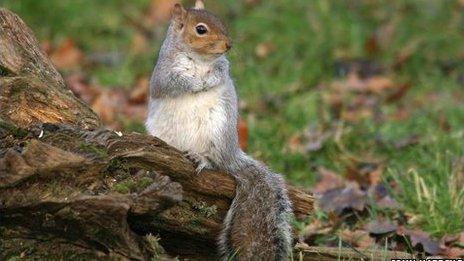
Grey squirrels out-compete native red squirrels for food
Grey squirrels were brought to Ireland deliberately.
In 1911, 12 were introduced in County Longford and they have reached pest level proportions since then.
The species is present in every county of Northern Ireland and is renowned for attacking the native red squirrel.
They out-compete the native reds for food, and feed more at ground level. Grey squirrels are also able to digest acorns, while the red squirrel cannot.
Grey squirrels also carry squirrel pox virus that the red squirrel is not immune too.
Debate has raged over the appropriate response to the threat of grey squirrels, including whether they should be culled.
However, eradication of the species is considered unrealistic.
Japanese Knotweed

The plant can grow up to 10cm a day and reach heights of more than 3m
Japanese knotweed is native to Asia but has become established right across the island of Ireland.
The plant is known for having an extensive root system. Once these roots become established they are very difficult to remove.
The plant can grow up to 10cm a day and reach heights of more than 3m.
Japanese Knotweed is increasingly becoming a problem for developers and property owners.
It is capable of growing through concrete. If a sighting of the plant is reported on land people wish to build on, it can potentially cast doubt over people securing a mortgage.
American Mink
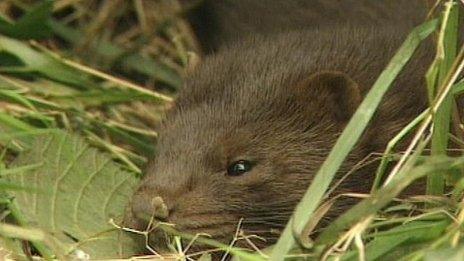
The American Mink was introduced to Ireland for fur farming in the early 1950s
This species is native to North America but can now be found in every county across Ireland, close to rivers and water sources.
Mink, which are often mistaken for otters, are popular for their thick fur.
In the early 1950s they were introduced into Ireland for fur farming. Over time, some escaped and others were deliberately released.
Inside this beautiful looking creature lurks an indiscriminate killer of birds, fish and small mammals. They decimate ground-nesting birds and tackle fish as large as themselves.
There exists no natural predators for mink and so the species is thriving.
- Published17 June 2014
